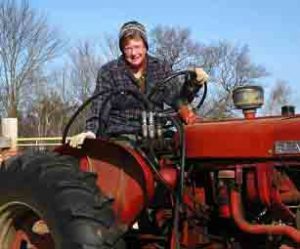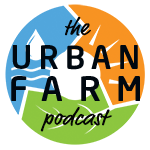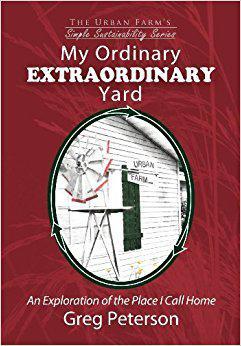308: Ann Larkin Hansen on Seasonal Planting for the Homestead.
Recognizing the seasonal commonalities in different areas.
 Ann is a homesteader and small-scale organic farmer, as well as a farm journalist specializing in sustainable farming and forestry. After she retired from farm reporting, she authored a number of books. Her latest book The Backyard Homestead Seasonal Planner – what to do and when to do it by Storey Press is in bookstores now. She lives with her family on a farm in northern Wisconsin.
Ann is a homesteader and small-scale organic farmer, as well as a farm journalist specializing in sustainable farming and forestry. After she retired from farm reporting, she authored a number of books. Her latest book The Backyard Homestead Seasonal Planner – what to do and when to do it by Storey Press is in bookstores now. She lives with her family on a farm in northern Wisconsin.
Don’t miss an episode! Click here to sign up for weekly podcast updates
In This Podcast:
It was the timing of it all that needed to be addressed, so author and farmer Ann Larkin Hansen realized she needed to write a book about how to recognize the right time to do things on the farm no matter where you lived. She took the time to identify the seasons in ways that would make sense in every area because it compiled the common factors that affected when to plant which type of crops. Her interest in writing and farming also helped with a few other books that she wrote and she shares a few more useful tips.
Listen in and learn about:
-
- Knowing since she was a kid that she wanted to farm and write
- The early winter temps she is experiencing in Wisconsin
- Recognizing the differences in seasons in different parts of the country
- Dividing the seasons up to common experiences by soil temperatures
- Soil markers and what they indicate
- How the WHEN of planting is such an important question that seemed to be overlooked
- The important aspects of this manual that helps homesteaders
- Figuring out what will not work and should not be attempted based on your climate
- How to find resources that work for your area
- How observation and adaption are keys to success
- Some things to consider when looking for farmland
- Some tricks about electric fencing, and protecting from wild animals
As well as:
Her failure – Trying row crops, being okay with that being a failure
Her success – Still being there at the homestead
Her drive – Working with her hands, and her responsibility towards the earth
Her advice – It’s your place, do whatever you want
Books written by Ann:
The Backyard Homestead Seasonal Planner
The Organic Farming Manual: A Comprehensive Guide to Starting and Running a Certified Organic Farm
A Landowner’s Guide to Managing Your Woods: How to Maintain a Small Acreage for Long-Term Health, Biodiversity, and High-Quality Timber Production co-authored with Master Logger Mike Severson and Consulting Forester Dennis Waterman
Maintaining Small-Farm Equipment: How to Keep Tractors and Implements Running Well. co-authored with Steve Hansen
Making Hay: How To Cut, Dry, Rake, Gather, and Store a Nourishing Crop
Finding Good Farmland: How to Evaluate and Acquire Land for Raising Crops and Animals.
Ann’s Book recommendations:
Holistic Management Handbook: Healthy Land, Healthy Profits by Alan Savory
Pleasant Valley and Malabar Farm
by Louis Bromfield
Farming for Self-Sufficiency: Independence on a Five-Acre Farm by John and Sally Seymour
How to reach Ann:
Email: shansena@centurytel.net
UrbanFarm.org/AnnLarkinHansen
Producer’s note: Here is a note from Ann after our interview: Hi Greg and Janis – In thinking over our delightful interview yesterday, I realized I forgot to mention that using electric fences in urban areas may be regulated or outright banned by ordinances, and in any case is not a good idea along any public road or pathway. The solution is probably to have a permanent non-electric fence (a physical barrier) along your perimeter, with electric wires run on the inside of that fence. Thanks so much for the interview – hope I was able to say something useful! Cheers, Ann
Don’t miss an episode! Click here to sign up for weekly podcast updates




